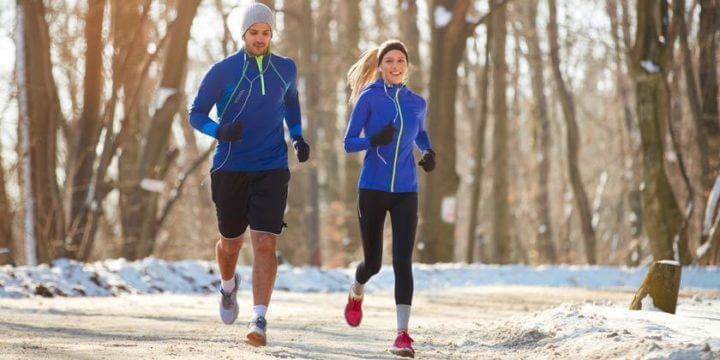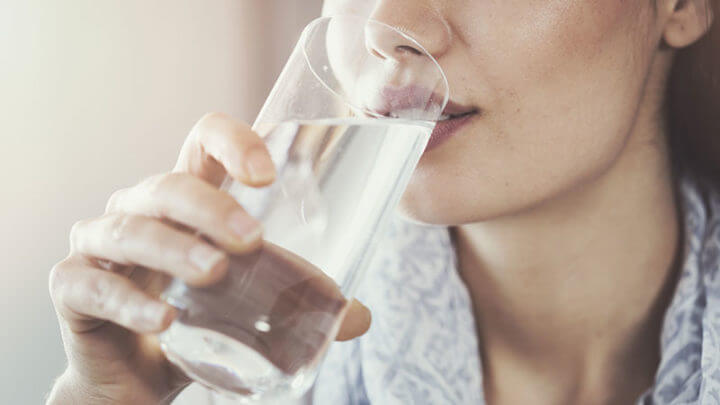The weather shouldn't stop you from exercising, much less discourage you from your daily routine. However, your skin can suffer if you are exposed to extreme temperatures such as cold, although there are ways to prevent such inconvenience.
When you train outdoors, your skin has to face cold and wind, a combination that is quite detrimental for it. Subjecting it to these experiences can strip the skin of its essential oils leading to the development of dryness, irritation and deterioration of the skin barrier.
To avoid uncomfortable sensations and the consequences of this type of exposure, you can follow these tips on how to protect your skin if you exercise in low temperatures .

8 ways to protect your skin from cold temperatures when training
1. Use sunscreen
Many people think that sunscreen is only necessary during the summer, but the reality is that UV rays have no rest during the year and are very harmful to the health of the skin.
For this reason, it is very important to use sunscreen with a protection factor 15 or higher whenever you want to exercise outdoors. Don't be fooled by a cloudy day and put on a layer of sunscreen at least 30 minutes before heading out to train.
2. Protect all exposed skin
Like sunscreen, hydration is an important step to take so that the skin can defend itself from the cold and wind that can potentially cause wind burns and dryness.
Doctors often recommend a moisturizer that contains petrolatum as an ingredient, which is known to prevent evaporation of water from the skin. In this case, the best options are quick and easy lotions to apply that do not leave a greasy residue on the skin.
Keep in mind that the lips are very susceptible to the weather, so you should pay special attention to their needs by applying lip balm throughout the day.
3. Wear wind and moisture proof training clothes
During winter it is not unusual for it to drizzle, which is not a problem for most fitness enthusiasts as long as they wear the appropriate wind and moisture proof clothing. You can also try wind resistant gloves to protect your hands from the weather.
Don't forget that accumulated sweat can cause irritation and even acne, although it is easy to solve this with an outfit that absorbs it.
4. Change quickly
Taking your clothes off after a cold workout is not a pleasant task for anyone, but it is a good idea to avoid future complications. It is the best way to get rid of all the dust, dirt and oil from the skin, avoiding the development of irritations or colds.

5. Don't take a hot shower
A hot shower may sound tempting when you're cold, but it doesn't do your skin any benefits, rather it harms and stresses it.
Those who are experts on the subject, recommend a temperature of 30 ° in the shower. This, like taking showers of about 10 minutes, prevents the water from removing all moisture from the skin.
6. Avoid exfoliation
It may seem logical to exfoliate the skin when it feels dry and flaky, but the real solution in that case is hydration.
If you try to exfoliate the skin with body brushes when showering after a training with exposure to the cold, all you will do is irritate skin that is already sensitive to any external factor. If you continue to notice flaking skin, you are allowed to exfoliate gently, although never immediately after training.

7. Hydration is essential
To regain all the hydration lost during exercise, it is best to apply some type of body moisturizer within 5 minutes of getting out of the shower.
If you have extremely sensitive skin, you should consult a dermatologist about special creams. Some people advise using petroleum jelly, as it is a great product to hydrate your hands overnight.
8. Drink lots of water
The skin, like the rest of the body, suffers from a lack of hydration when you forget to drink water during a workout. This can happen because sweat and thirst go unnoticed during the winter, as opposed to the summer.
Make sure to monitor your hydration level depending on the color of your urine, because if it is pale yellow you will know that you are well hydrated.

conclusion
Before going out to exercise at low temperatures you must remember to take care of your health; This means taking into account different aspects such as clothing, aftercare and hydration.
If you have doubts about it or your skin is severely affected by extreme climates, you should consult a dermatologist about your situation.
References
- Lauren, DT 8 Ways to Save Your Skin if You Exercise Outside This Winter. For Livestrong. [Revised January 2020].
